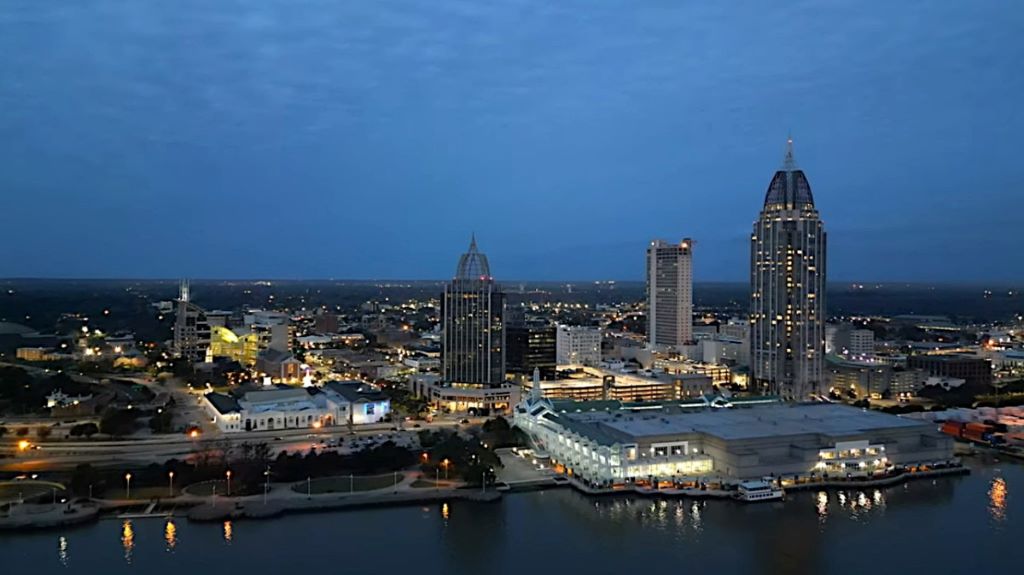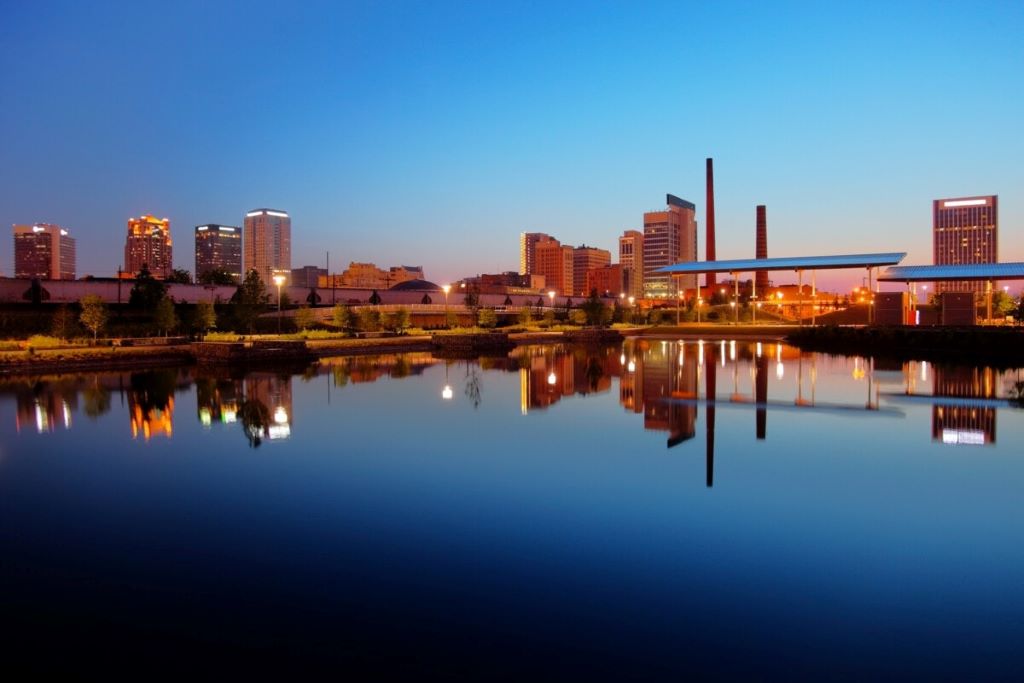
Finding Your Sweet Spot: Why Alabama is the South’s Best Kept Travel Secret
December 13, 2024
How to Install Uncoupling Membrane for Tile on Concrete
December 14, 2024From Steamboats to Subarus: The Evolution of Travel in Alabama
The evolution of travel in Alabama, with its rich history and diverse landscapes, has witnessed a fascinating transformation in how people journey across its borders. From the early days of indigenous trails and steamboats to the modern era of interstate highways and air travel, the state’s transportation evolution mirrors the broader American story of progress, adaptation, and an enduring desire to explore.
Table of Contents
ToggleEarly Trails and Waterways: The Pathfinders
Long before European settlers arrived, Native American tribes like the Cherokee, Creek, and Choctaw traversed Alabama’s terrain using a network of well-worn trails. These paths, often following natural features like rivers and mountain passes, facilitated trade, communication, and cultural exchange between different communities. These early routes laid the foundation for future transportation corridors, with many modern highways and railways tracing their origins back to these ancient pathways.
The arrival of Europeans in the 16th century brought new modes of travel. Rivers, particularly the Alabama, Tombigbee, and Tennessee, became vital arteries for exploration and commerce. Clumsy flatboats and keelboats, powered by human muscle and the river’s current, gradually gave way to more efficient steamboats. These elegant vessels, with their iconic paddlewheels churning the water, ushered in a new era of river travel, connecting Alabama’s interior with the bustling port of Mobile and the wider world. The steamboat era, romanticized in literature by Mark Twain, brought increased trade, migration, and cultural exchange to the state.
Iron Horses and the Rise of the Railroads:
The 19th century saw the arrival of a transformative technology: the railroad. Alabama embraced this innovation with enthusiasm, recognizing its potential to connect distant communities and fuel economic growth. The first railroad line in the state opened in 1832, connecting Tuscumbia with the Tennessee River. This marked the beginning of a “railroad mania” that saw lines crisscrossing the state, linking towns, cities, and industrial centers.
The railroads revolutionized travel and trade in Alabama. They transported cotton, timber, and other goods to markets, facilitating the state’s agricultural and industrial development. Passenger travel also boomed, with luxurious Pullman cars offering a comfortable alternative to stagecoaches and bumpy wagon rides. The railroads brought people together, fostering a sense of interconnectedness and shared identity within the state.
The Automobile Age: Hitting the Open Road
The early 20th century witnessed the rise of a new mode of transportation that would forever change the landscape of travel: the automobile. Henry Ford’s Model T, with its affordability and mass production, put car ownership within reach of ordinary Americans. Alabama, like the rest of the nation, embraced this new technology, and the state’s dirt roads gradually gave way to paved highways.
The automobile offered a level of freedom and flexibility previously unimaginable. Families could now embark on road trips, exploring the state’s scenic beauty and visiting distant relatives at their own pace. The automobile also spurred the growth of new industries, such as tourism, hospitality, and roadside services. Motels, gas stations, and diners sprang up along the highways, catering to the needs of a mobile population.
Taking Flight: Alabama Embraces the Skies
While automobiles transformed land travel, another revolution was taking place in the skies. The Wright brothers’ pioneering flight in 1903 ushered in the era of aviation, and Alabama was quick to embrace this new technology. The state’s first airport, Maxfield Field in Montgomery, opened in 1929, offering commercial air service to Atlanta.
Air travel brought a dramatic shift in how people perceived distance and time. Journeys that once took days or weeks could now be completed in a matter of hours. This opened up new possibilities for business, leisure, and personal connections. Alabama’s major cities, such as Birmingham, Huntsville, and Mobile, developed modern airports, connecting the state to national and international destinations.
The Interstate System and Modern Travel
The post-World War II era saw the construction of the Interstate Highway System, a network of high-speed roads that transformed America’s transportation landscape. Alabama benefited greatly from this infrastructure project, with Interstates 65, 20, and 85 crisscrossing the state, facilitating trade, tourism, and commuter traffic.
The Interstate System, coupled with the continued growth of air travel, has shaped modern travel in Alabama. People can now easily traverse the state by car or plane, connecting with communities and destinations across the region and beyond. The state’s transportation infrastructure continues to evolve, with ongoing projects to improve roads, expand airports, and enhance public transportation options.
Looking Ahead: The Future of Travel in Alabama
As technology continues to advance, the future of travel in Alabama promises to be even more dynamic and interconnected. Emerging trends such as electric vehicles, autonomous driving, and high-speed rail could reshape how people move within the state and beyond.
Alabama is also exploring innovative solutions to address transportation challenges, such as traffic congestion and environmental sustainability. Investment in public transportation, bike-sharing programs, and pedestrian-friendly infrastructure aims to create more livable and accessible communities.
From ancient trails to interstate highways and soaring airplanes, Alabama’s journey through the evolution of travel reflects the human spirit of exploration, innovation, and a constant desire to connect with the world around us. As the state continues to embrace new technologies and adapt to changing needs, the future of travel in Alabama promises to be as exciting and transformative as its past.
Frequently Asked Questions about Travel in Alabama
Q: What are some of the must-see attractions in Alabama?
A: Alabama offers a diverse range of attractions for visitors. History buffs can explore Civil Rights landmarks in Montgomery and Selma, while nature lovers can hike in the Appalachian foothills or relax on the Gulf Coast beaches. Other popular destinations include the U.S. Space & Rocket Center in Huntsville, the Barber Vintage Motorsports Museum in Birmingham, and the vibrant music scene of Muscle Shoals.
Q: What is the best time to visit Alabama?
A: The best time to visit Alabama depends on your preferences. Spring and fall offer pleasant temperatures and beautiful scenery, while summer is ideal for enjoying the beaches and outdoor activities. Winter can be mild, but some attractions may have limited hours.
Q: How can I get around Alabama?
A: Alabama has a well-developed transportation infrastructure. Major cities have airports with connections to national and international destinations. The Interstate Highway System makes it easy to travel by car, and Amtrak provides passenger rail service to several cities. Public transportation options vary by city, with bus systems and ride-sharing services available in urban areas.
Q: What are some tips for driving in Alabama?
A: Be aware of the speed limits, which vary depending on the type of road. Alabama law requires the use of seat belts for all passengers, and it is illegal to text while driving. Be prepared for changing weather conditions, especially during the summer months when thunderstorms are common.
Sun, Sand, and So Much More: Unforgettable Adventures in Alabama Gulf Shores
Q: What are some unique experiences I can have in Alabama?
A: Alabama offers a variety of unique experiences. You can explore the state’s musical heritage on the Alabama Music Trail, hike to waterfalls in the Talladega National Forest, or kayak through the Mobile-Tensaw Delta. For a truly unique experience, attend a college football game at Bryant-Denny Stadium in Tuscaloosa and witness the passion of Alabama football fans.
Q: Is Alabama a good destination for families?
A: Absolutely! Alabama offers numerous family-friendly attractions, including zoos, aquariums, museums, and amusement parks. The state’s natural beauty provides ample opportunities for outdoor adventures, such as hiking, fishing, and camping. Many hotels and resorts offer amenities specifically designed for families, such as kids’ clubs and swimming pools.
People Also Loved: World Nomads Travel Insurance in Alabama: Your Adventure Buddy
Q: What are some tips for planning a budget-friendly trip to Alabama?
A: Consider visiting during the off-season for lower prices on accommodations and attractions. Take advantage of free activities, such as hiking in state parks or exploring the beaches. Look for deals on dining and entertainment, and consider packing your own snacks and drinks to save money.
Q: What are some resources for learning more about travel in Alabama?
A: The official tourism website for Alabama, Alabama.travel, provides a wealth of information on attractions, events, and accommodations. Local visitor centers can also offer helpful advice and resources. Additionally, travel blogs and online forums can provide insights and recommendations from fellow travelers.





